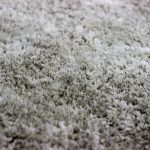How to find a good dentist and how to get to know him? Nowadays, a…

Coffee shops – how to recognize a good coffee shop
Coffee shops – how to recognize a good coffee shop. Coffee is one of the most popular psychoactive substances on Earth. The cultivation and distribution of coffee itself is an elementary part of the economies of many countries that have perfected the cultivation of certain varieties. The only commodity that is more profitable when traded is crude oil. No wonder that in such a world we can find unimaginable amounts of products on offer, which is why we should be able to distinguish a good coffee shop from a consumer trap.
First of all, you should tell yourself a bit about the coffee itself and what characterizes good coffee. This is a very difficult question that would require extensive discussion of thousands of baristas, but for our needs, we can highlight a few objective features of good coffee.
- https://www.lovelove24.com.pl/myjnia-samoobslugowa-a-prawo-budowlane/
- https://www.siodemka.org.pl/rehabilitacja-kolana-jakie-zabiegi/
- https://www.kurka.edu.pl/jak-wiazac-chusty-do-noszenia-dzieci/
We deal with two types of coffees on a daily basis: Arabica, probably better known to most people, and Robusta, less popular in Poland, although not infrequently consumed. These species are divided into various subtypes, but general knowledge is enough to recognize a good coffee shop.
Arabica coffee is definitely more popular in terms of marketing. Often we can see all kinds of advertisements, stickers and announcements that a given coffee is 100% Arabica, which in itself is supposed to mean some kind of quality. But is it really so? Is Arabica really just a better variety than Robusta, what are the differences and which beans are more common in coffee shops?
First of all, Arabica is a more difficult species to grow. It can be very burdensome, requires specific climates, preferably equatorial ones, although it is less susceptible to diseases. Robusta, on the other hand, is grown in many more areas of the Earth because of its lower requirements for sunlight, rainfall and altitude.
Visible to the naked eye is the first known rule: people value rarity. There is simply less Arabica, which is why coffee shops praise it more often. Is that all? No, the taste differences are also important. Especially in Poland, people are used to the delicate, less stimulating, chocolate-spicy aftertaste of coffee, which results from the use of Arabica beans. Unfortunately, many fast food chains, restaurants, and coffee shops use a mixture of the two.
If the coffee has an unnaturally large amount of foam on the body, it is because of the use of Robusta beans. 100% Arabica will not foam so intensely. Such differences in the coffee used can be felt even by an inexperienced coffee lover, so if a product from a coffee shop turns out to be not as described, this is probably the best argument for determining whether it is a good store.
However, the world does not end with Arabica and Robusta, as both species have their admirers. When referring to more subtle differences in the method of obtaining grains, their types, and the plantations they come from, we can use the markings. One such designation is the European Specialty Quality mark. This inconspicuous, somewhat generic name is actually a respected and recognizable source of knowledge about coffee. If a coffee shop doesn’t have products with such reviews, it means they deserve them and you should be careful. Definitely no one would hide if his products had such an opinion.
The last, slightly softer tip that will distinguish good coffee shops into those that sell coffee and those that squeeze it is the store’s assortment. While it would seem intuitive that variety and overall glamor would suggest the quality of the store, it may turn out to be the complete opposite.
There is a saying in gastronomy: you know a good pizzeria by Margarita, the most basic pizza. In the case of coffee shops, we may have similar feelings. Coffees from countries such as Ethiopia (the home of coffee), Kenya, Indonesia, Vietnam, Brazil, and Colombia are among the most widely drunk on Earth. The products from those regions are therefore priced adequate to the quality and are very desirable. If we are not a coffee specialist, there is a good chance that dishonest sellers will squeeze us other coffees that sound professional, overwhelmingly described.
If we ask a salesman in a coffee shop for any recommendation, and the first thing he does is show the promotional coffee on the counter, then we should turn on our heels. There is also a good chance that the seller will start recommending us everything that can encourage us with the name. Numerous floral, fruity, sweet and bizarre blends will seem like an interesting option to expand your experience and experiment. In fact, if we do not have the appropriate equipment and knowledge, we will only brew beans and get something that will taste like bland coffee.
Paying special attention to the markings on coffee, the quality of control tests and other determinants of well-being can allow us to evaluate the coffee shop , even if we are the first in it once, or we are in a foreign country. It is worth remembering to be able to fully enjoy the taste of decent coffee, grown with the consumer’s pleasure in mind.
Zobacz także
-
How to find a good dentist and how to get to know him?
-
How to choose a good accounting software
How to choose a good accounting software. Having accounting programming offers many features and tools…
-
Good light = healthy eyes. Which lamps to choose for an apartment?
Good light = healthy eyes. Which lamps to choose for an apartment? Good lighting plays…
-
Positioning of websites, i.E. What to do to climb the search engine ranking ladder
Positioning of websites, i.E. What to do to climb the search engine ranking ladder Nowadays,…
-
Why is it worth to outsource the washing of carpets and rugs to a professional company?
Why is it worth to outsource the washing of carpets and rugs to a professional…
Kategorie
Artykuły
- When should you consider visiting an orthopedist?
- How much money do you need to open a pawnshop?
- How to find a good dentist and how to get to know him?
- Employees from Ukraine
- Selling a house, or what is worth remembering and what increases the attractiveness of the property?
- Horse riding – what should you know about it?
- Insurance glossary – a compendium in a nutshell
- What is the carrier’s OCP?
- Is it worth renting a tow truck?
- Positioning of websites, i.E. What to do to climb the search engine ranking ladder
- Is chiptuning safe?
- How to decorate the interior – a review of wall wallpapers
- Gift jewelry
- Properties for sale – what is worth remembering and what encourages customers to buy?
- Sardinia – heaven on earth
- The history of the bongo
- Own funds and the purchase of an apartment
- A stylish and unusual place for your socket
- Some tips on how to design a good banner ad
- Dental implants – find out more!
- Car rental – customer and business
- Femininity in material, i.e. Underwear
- Pages in wordpress – design
- How to choose a good accounting software
- How to choose legal services
- Interactive equipment in schools
- Programming robots as a christmas present
- Fashionable interior design
- Advantages of a touchless car wash
- Why choose an accounting service
- Good light = healthy eyes. Which lamps to choose for an apartment?
- What is the work of a surveyor?
- At a beautician over sixty: what treatments to choose?
- Are you buying a new apartment? Check the developer first
- How many degrees should you wash children’s clothes?
- How to choose a gaming laptop?
- Tempered glass and a protective film – what to choose?
- Which exterior door to choose
- Products for young children – how to choose good cosmetics?
- Renting apartments in the capital, and efficient investment management
- Photovoltaics will change our planet
- Who is a podiatrist?
- Coffee shops – how to recognize a good coffee shop
- Emporio Armani – premium fashion that conquers the world
- Private investigator – what services does he offer
- Changing the silhouette using the small steps method
- Organize the perfect conference
- Thermoactive clothes – for sports and more
- What is car scrapping?
- Why do we need phone calls?
- Accessories useful when moving
- If you graduate from high school, it’s only it!
- Dresses for a wedding and the type of figure
- Types of spa treatments
- Garage doors on private properties. How to choose and match the garage door?
- Retirement home – what should you consider when choosing it?
- Recuperation and heat pumps – application
- What should you know before the hair transplant procedure?
- Redecoration of the apartment
- Characteristics of wooden structures




